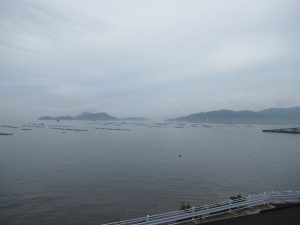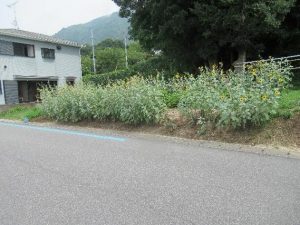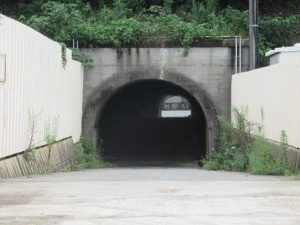100 Stories
Cycling on Etajima: Floating in the Island Breeze
Are you familiar with the concept of “Island Time?” I don’t know what it is about life on an island, but time itself seems to slow down for anyone who sets foot on soil floating in the middle of the sea. This slowdown impacts the lifestyles of the people who live on said island, going about their routines at a leisurely pace, or simply going with the flow, wherever the wind takes them. Etajima is one such island not too far from the shores of Hiroshima City, and I had planned a day for cycling around the island, packed with things to do. However, once I arrived on Etajima, I soon realized that all this stressing over schedules and routes was futile due to “Island Time.” There’s pretty much no concept of when or how long; you either do something or you don’t, and it takes as long as it takes. The only thing I reserved was a bicycle, and once I had that, there was nothing else to do but ride and roll with the punches.
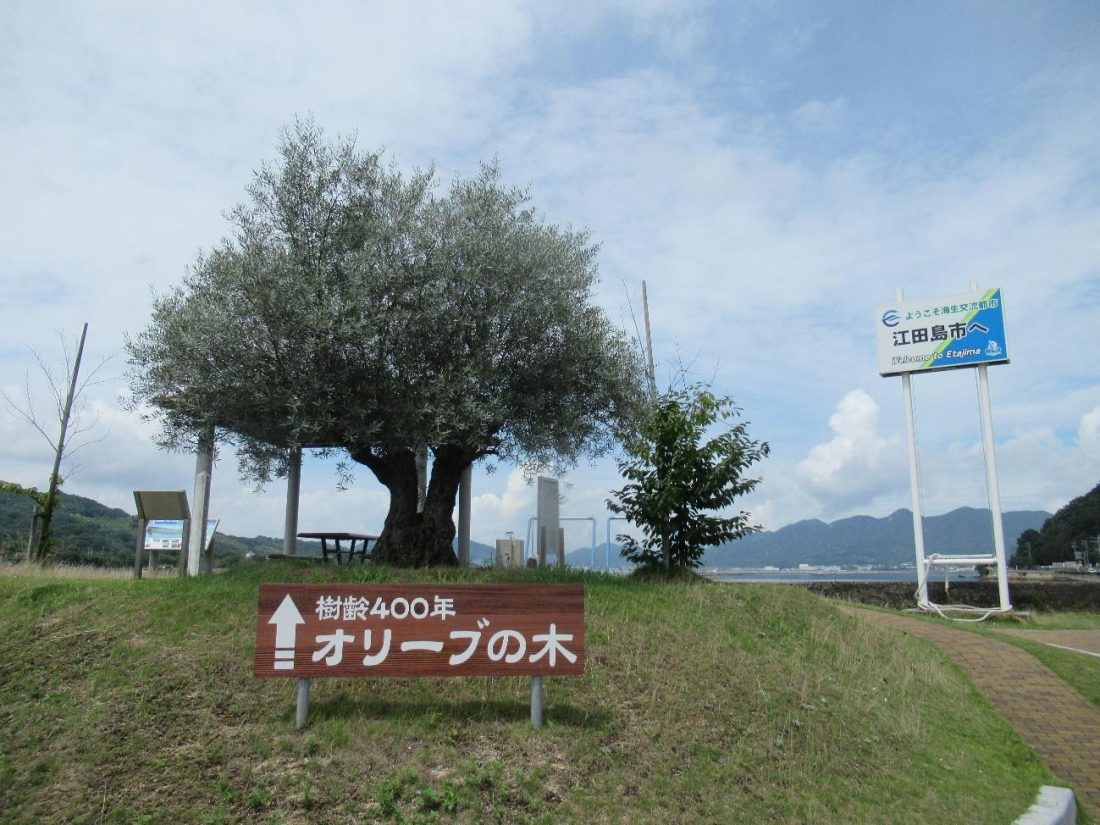
The Only Necessary Planning
As this would be my first time on Etajima and I knew almost nothing about what was around the island, all I knew was that I wanted to go cycling, so that’s where my planning began. There are several ports dotted about the island, but one of the closest ports to Hiroshima’s Ujina Port (resulting in a cheaper fare) is 三高港 (Mitaka Port), where tourists can rent one of two different bikes to ride around the island. Once I found a day in my schedule when I was free, I phoned in to book a regular electrical assist bicycle at Mitaka Port (Japanese necessary). In addition to my name, the date, and the number of bikes, I was also asked for the approximate time of rental and return, of which I also wasn’t certain, but that’s okay. For instance, if you think you’ll start in the morning, just say, “nine o’clock,” and it doesn’t matter if you’re late to pick up or return your bike because they won’t hold you to your predetermined times (so long as you do it within business hours). That’s Island Time for you.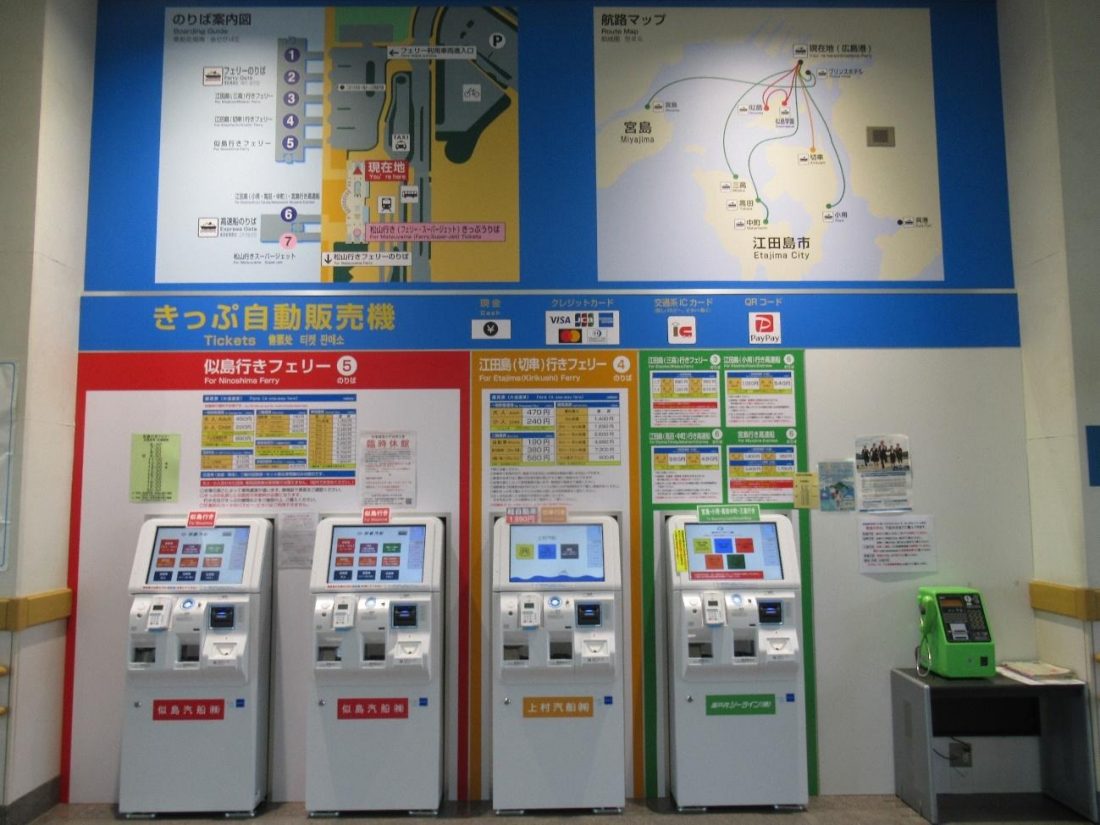
Ujina is located a bit away from most of the hubbub tourists are looking for, but access is easy thanks to the streetcar. If departing from Hiroshima Station, either the number 1 or number 5 will take you to Hiroshima Port, the terminal station, and if you’re going from downtown, either the number 1 or number 3 southbound streetcars will suffice. Since you’ll be riding it to the end (Hiroshima Port Station), there’s no specific stop to memorize and you could essentially fall asleep until the streetcar comes to a halt; I’m sure someone will wake you up. I started early in the morning to take advantage of cooler temperatures, and that long ride is a good chance to get in some shut-eye before I really got moving. The ferry terminal is a decent place with some souvenir shops and restaurants, but at this hour, no one was open except for the bakery. I went to the green vending machine to buy a round-trip ticket to Mitaka Port, swung by the bakery to pick up breakfast to go, and dashed outside to pier 3 to hop on the ferry in the nick of time.
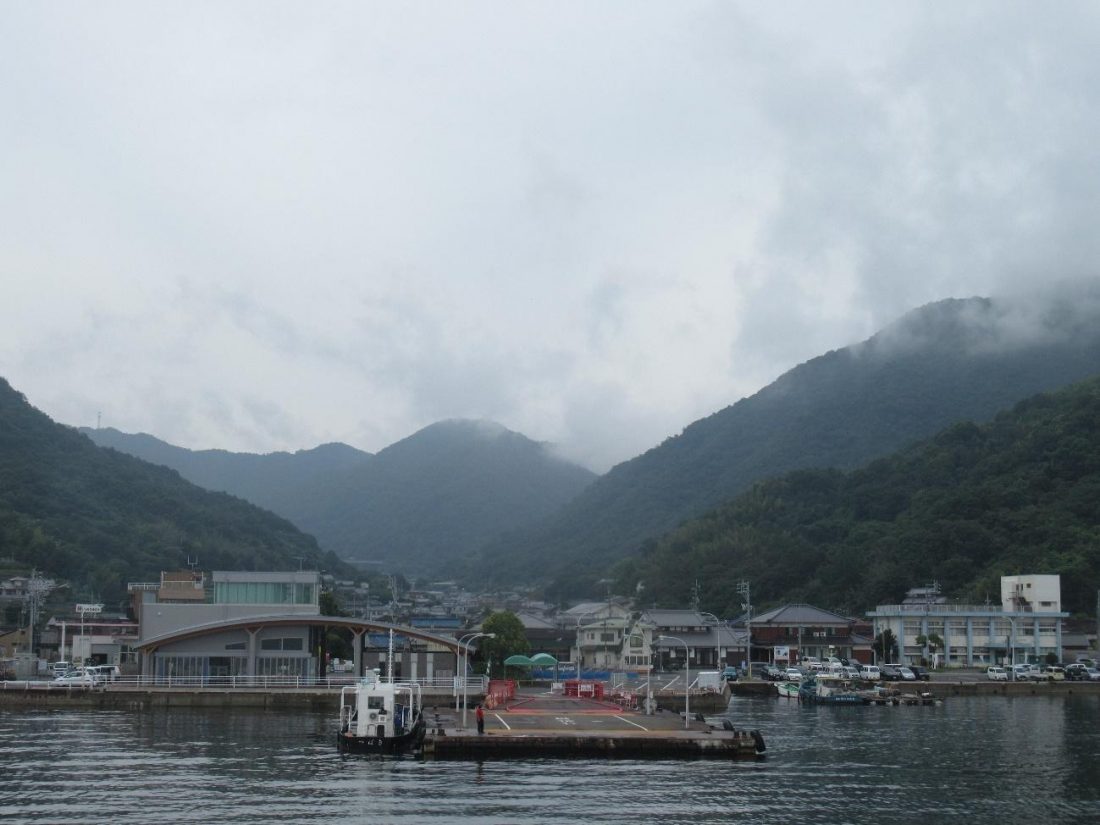
The ferry takes a little more than thirty minutes to reach Mitaka Port, so this is your actual last chance to take a power nap and charge those batteries for the trial by pedal. Instead of sleeping, though, I took the time to eat the bread I had bought and marvel at the seascape, cloudy skies and all. Rainy season in this part of Japan typically ends in July, and typhoon season rears its head in mid-September, but this year saw some typhoons come by Japan in mid-August, throwing a spanner into the weather forecasts as well as people’s summer vacation plans. Despite the typhoons being predicted to subside by the 23rd, the odds didn’t look pretty and the forecasts were still wishy-washy. During the days leading to my excursion, though, I decided that worrying about the actual weather that wasn’t worth losing sleep over, so I booked my bike rental for the 23rd and chose to play it by ear. No gray skies were about to figuratively rain on my day trip, and if the sky didn’t open up later then I’d just enjoy cool breezes all day long.
Renting and Riding
As soon as the boat docked, I disembarked, dropped my first ticket into the collection box, and immediately sought out the bike rental facility. I walked into, out of, and around the tourist information center, but couldn’t figure out where my rental bike was being held. I finally asked a lady inside the building, who took me to the correct counter, whereupon I stated my name, paid the rental fee plus a ¥1,000 deposit (which is reimbursed if the bicycle is returned to the same port), and went over some paperwork before the man behind the counter introduced me to my wheels. The bike I was renting to ride was the one on the left; it’s basically your average city bike with a basket, outfitted with an electric motor to make circumnavigating the island easier. The man explained how to unlock and lock the bike, how to use the electrical assist function, and what number to dial in case of accidents, flat tires, and the like. From then on, I was on my own, so I walked my bike out to the front door to begin my lap around Etajima.
The moment I got on and started pedaling, another lady from the tourist information center who just so happened to be outside inquired about my trajectory. Since Etajima is famous for olives, I answered back with “Olive Factory (a locally famous Italian restaurant on Etajima),” even though I was uncertain about my exact route. She beckoned me back into the building to give me a cycling map of the island, and we even pored over the map together to put together some sort of agenda. Etajima certainly doesn’t lack sightseeing spots, but none of the sights was a must-see for me that day. Thus, I chose my route and pit stops based primarily on lunch; I opted for a place called 海辺の新鮮市場 (うみべのしんせんいちば – Seaside Fresh Market) in hopes of tasting local sashimi. It was southeast of my current location, but to maximize the nature I could see in the beginning and to time my arrival with lunch hour, I decided to cycle counter-clockwise before eventually riding into town.

With that discussion out of the way, I could finally leave Mitaka Port and start enjoying the wind blowing through my helmet hair. Because cars drive on the left in this country, I stayed on the right side of the street so that the nearest cars would always face me, thereby eliminating the element of surprise. For most of the way, there are blue lines on the road indicating where cyclists should go, so they can simply concentrate on moving forward instead of being confused at forks and intersections. I was able to pick up speed after leaving the port, and because that electric motor instantly kicked in, pedaling was a cinch. There were only a few inclines where I had to exert effort through my legs (riding while standing helps, but isn’t necessary), but there’s no fun without a little bit of challenge, is there?
Moment of Joy: Flying by the Seat of My Pants
It’s common sense that what goes up must eventually come down, and after ascending some hills, that’s exactly what happened. Stopping every now and then to photograph points of interest such as oyster rafts and sunflower fields was enjoyable, nothing beat the cool island breeze I felt rushing downhill, which served well to counter the heat on this cloudy, muggy day.
Other than occasionally applying the brakes for safety and turning, I took full advantage of chances to maximize my speed. I had no idea what lay ahead around the bends on the road, but I felt comfortable in spite of all that because all that mattered in this moment was the adrenaline rush.
Coming out of said tunnel, I was greeted by more urban scenery, with stores and restaurants on either side indicating that I was fast approaching my destination for lunch. It was also around this point where cyclists start to see fewer blue lines showing the way, so in addition to slowing down for the numerous cars in my proximity, I sometimes had to park to the side for a moment to confirm with my smartphone that I was on the right track. As suspected, I was also making good time, and would supposedly reach the seaside seafood market before 1:00 p.m., prompting me to hurry north to one of the many key landmarks around the island: a 400-year-old olive tree, accompanied by a sign that read, “Welcome to Etajima,” as pictured up top.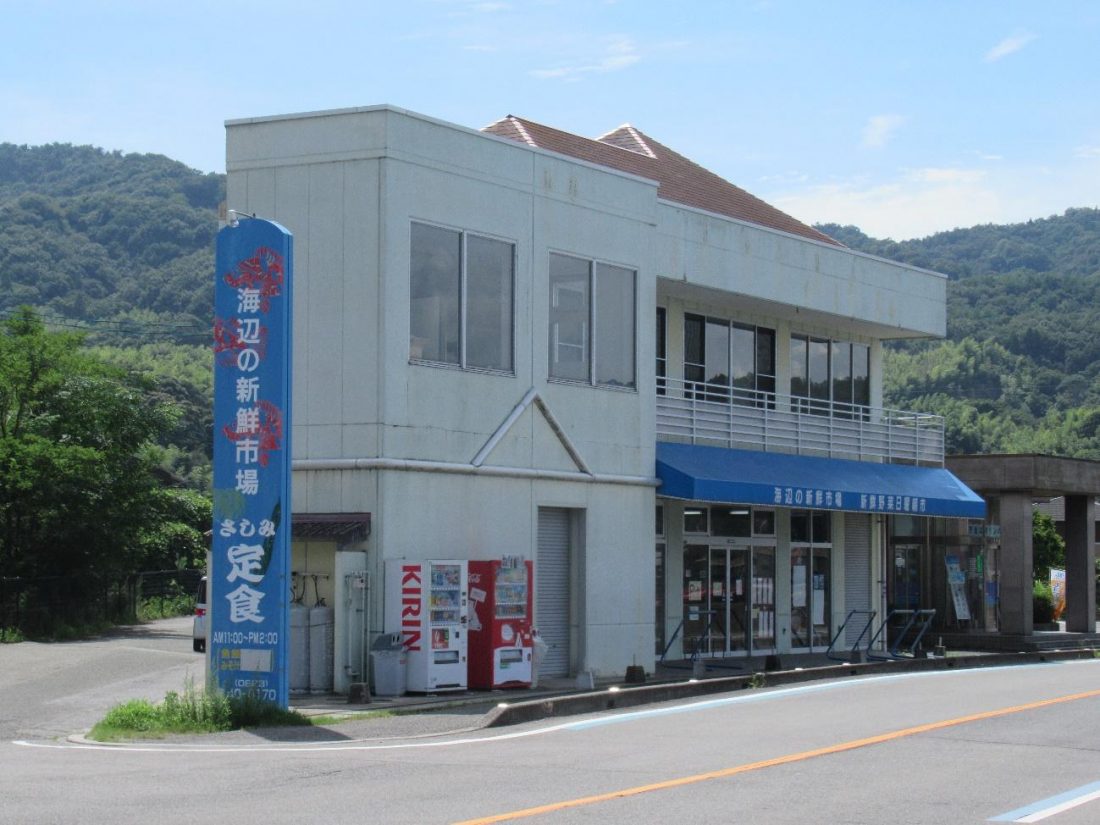
I turned left at the olive tree and continued for about a block to find out that like other similar establishments on the island, the seaside seafood market was also closed on Mondays. My reaction was less than surprised or even disappointed; I went with the flow and nonchalantly sought out another restaurant. Backtracking a little south of the olive tree took me to a local tavern called 旬彩 (Shunsai), which also serves fresh sashimi as part of its lunch set meal. I parked my bike outside the front door, locked it, and went inside to wait to be seated.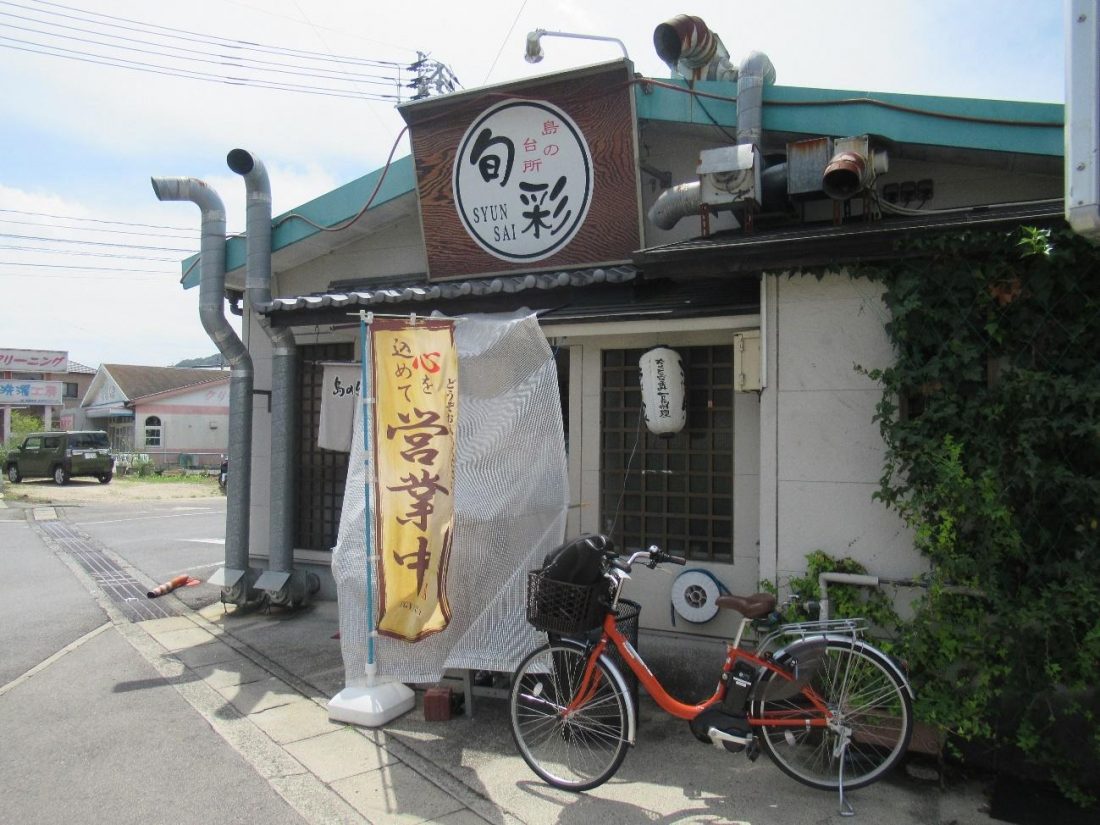
Shortly after I was seated, I ordered their Shunsai Lunch, which comes with sashimi, shrimp tempura, karaage chicken, miso soup, and rice, among other delicacies. The meal took a good while to prepare, but with a meticulously assembled spread like this, a while is only natural. To the left and right of my sashimi sat some marinated seaweed salad and Agedashi tofu, respectively, and accompanying the fried foods at the top were a fresh green salad and an orange wedge. The pickles at the bottom make the diner wolf down rice with even greater gusto, and as with almost every Japanese restaurant I’ve ever visited in Japan, refills on steamed rice are absolutely free! Shunsai is just a regular place to grab lunch by day, but apparently, it’s a pretty classy izakaya by night, so I consider it a real treat to be able to have izakaya-quality food in the middle of my island cycling tour. I spent about as much time eating my lunch as they did making it because I figured I wasn’t in a hurry to get anywhere from this point on. The concept of Island Time didn’t take long to settle into my mind at all.
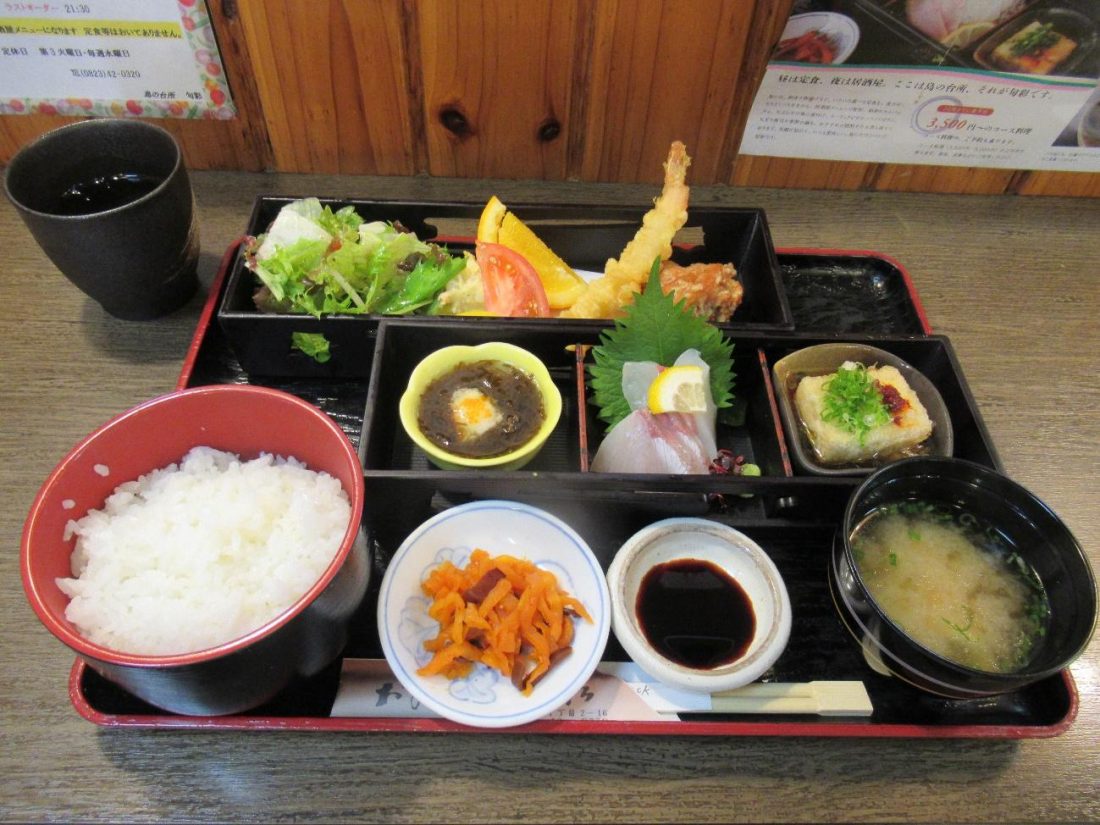
The Rest of the Excursion
With the rest of the afternoon ahead of me to go wherever and do whatever I wanted, I took my bike and headed north of the olive tree from before. According to the cycling map I got before I set off, the former site of the Imperial Japanese Naval Academy–now the site of the Officer Candidate School for the Japan Maritime Self-Defense Force–is situated in the northern part of Etajima. The map also said that they offer tours of the former naval academy grounds, and I could be in time to catch the next one at 3:00 p.m. I set my sights on making it for the tour, but I guess distances always look farther on maps because I actually got there well before the start time. Instead of waiting it out on site, however, I rode further up an incline to the nearest convenience store to cool off and have a drink before returning.
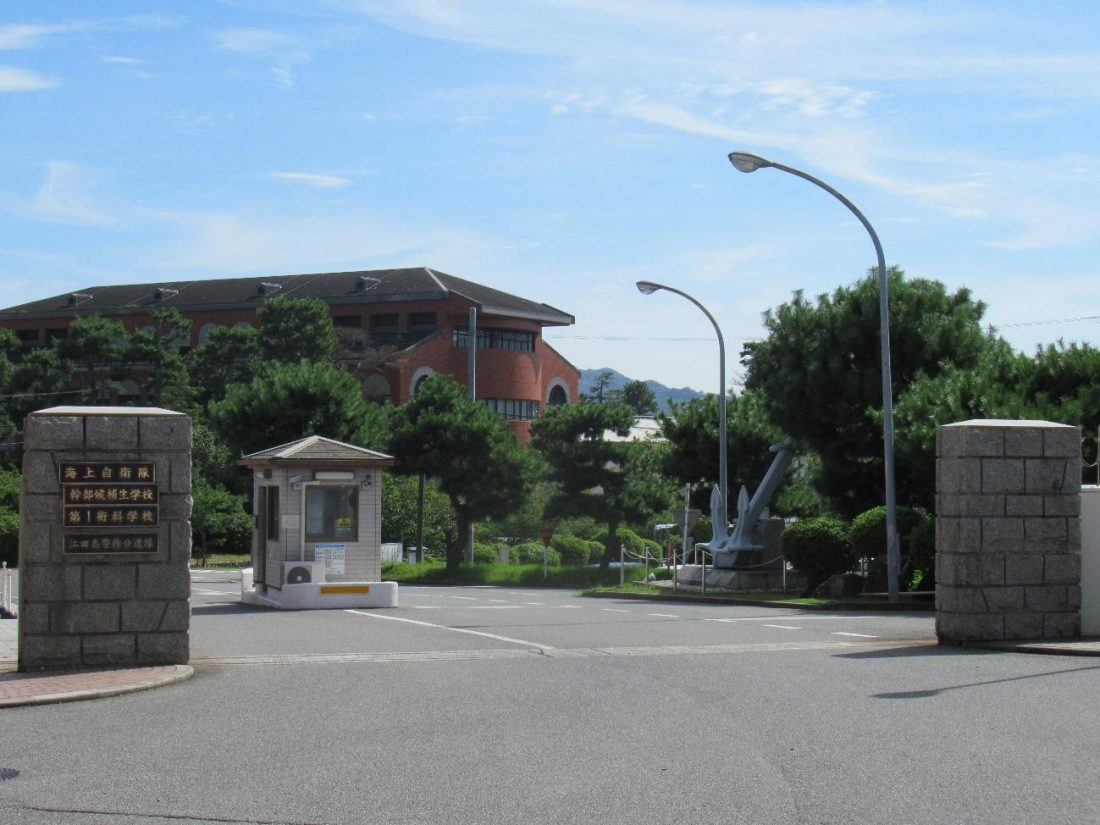
I walked my bike through the front gate and stated my interest in joining the tour, but was met with denial. Not only were there no tours, but the academy building was closed altogether today. My reaction was not a strong one given how many places I had wanted to visit were closed the day I chose to visit Etajima, so I shrugged it off and huffed it back to the landmark olive tree. At this point, all there was left to do was complete my circuit by riding all the way to Mitaka Port and figure out everything else from there.

I turned onto the same street where I found the seaside seafood market, and right across the street, there were some locals walking around the bay at low tide, each with a bucket in hand. I had no idea exactly what littoral critters they were gathering, but no doubt it would be for sale tomorrow, if not for consumption this evening. This scene got me fantasizing about the freshness of the seafood I could’ve had on any other day but Monday. The prospect of indulging in sashimi right by the Seto Inland Sea serves as reason enough to come back to Etajima, and I wouldn’t even necessarily have to cycle since there are frequent bus lines running around the island. For the rest of my ride, I took my sweet time whilst dreaming about what to see and eat on my next voyage here, savoring every bit of the last part of today’s course.

The timing of my arrival at Mitaka couldn’t have been any better if I had tried. As soon as I reached the tourist information center to return my bicycle, the ferry was in the midst of docking, and the man who took back the bike gave me back my ¥1,000 and informed me that the boat would be departing for Ujina Port in ten minutes. I really have to hand it to the sluggish island mentality for helping me cope with all the surprises and mishaps and letting me enjoy my outing regardless. Did you notice that the sun came out partway through my journey? The entire flow of today combined with that change in weather was a surefire sign in my eyes that no matter how much or little I’m prepared for any trip, that things will always turn out well in the end.
The ferry cabin’s air conditioner is a lifesaver, and while I spent the bulk of my time standing right beneath the blowers, the temptation to go outside was too strong to ignore. The sight of our boat and others pulling into Ujina was a warm reminder that although I felt rather busy given the long ride and lunch, that there was still plenty of daylight left and a multitude of things to do back in the city. Tourists can grab a snack back at the ferry terminal or have dinner at one of the restaurants near the station. Better yet, ride the streetcar back downtown and revel in the contrast between the atmospheres of Etajima and Hiroshima City. The moral of today’s trip is not to sweat the small stuff when it comes to planning day trips out of town, because abruptly making plans on site is not only possible, but sometimes even preferable. If you wish to enjoy Island Time all over Etajima, just reserve a bike and go; the island will take care of the rest.





